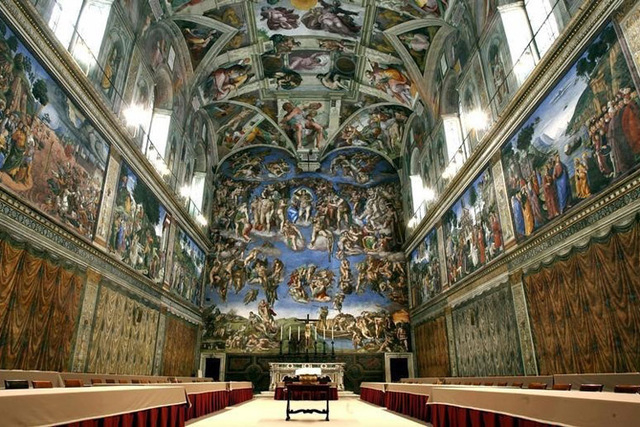Sistine Chapel limiting visitors to protect art
VATICAN CITY — The Vatican will restrict the number of visitors to the Sistine Chapel to 6 million a year to protect Michelangelo’s delicate frescoes from damage caused by ever-growing crowds of tourists, an official said on Thursday.
Visitors to the chapel - where popes are elected in secret conclaves - can reach 20,000 a day in summer, with up to 2,000 people inside at a time.
Dust brought in from outside, body sweat and carbon dioxide pose a major risk to Michelangelo’s ceiling frescoes, which are more than 500 years old. They include one of the most famous scenes in the history of art - the arm of a gentle bearded God reaching out to give life to Adam.
To protect the work of the Renaissance master, the Vatican has installed a new climate control system that will filter the air in the chapel, as well as a new high-tech lighting system that will cut damaging heat by more than half.
“I am convinced that the Vatican Museums, in particular the Sistine Chapel, have reached the maximum number of visitors possible,” Antonio Paolucci, head of the Vatican Museums, said at a news conference to introduce the new lighting and climate control systems.
Paolucci said the current number of 6 million visitors a year would be the maximum tolerated.
“We did not do all this in order to allow more people into the Sistine Chapel.” Work on the new systems began in June and are expected to be in place by the end of this month.
Michelangelo’s frescoes, inaugurated in October 1512 by Pope Julius II, underwent a major 14-year restoration that ended in 1994. They also include the famous “Last Judgement” on the wall behind the altar, which the artist painted separately in 1535 and 1541.
In recent years art historians and restorers have called for severe limits on the number of tourists allowed to enter the chapel, part of the vast Vatican Museums complex.
Paolucci said the current system - a mix of reservations made through the Internet or travel agencies and queuing up outside - would continue for the time being but did not exclude the possibility of switching to a reservations-only system.
Apart from the potential damage to the frescoes, critics have also said the number of people allowed into the chapel should be reduced for reasons of decorum because it is also a place of worship. But Paolucci appeared to rule this out.
“We all would like the Sistine Chapel miraculously empty … but we live in the democracy of consumption,” he said.























